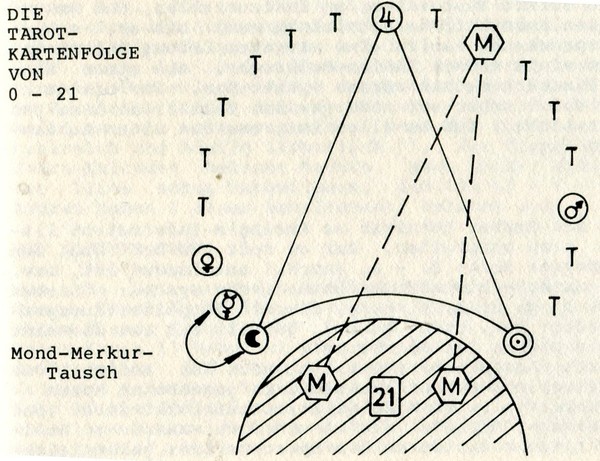SteveM wrote:
While the order of the planets could be ordered/numbered as either from or to the earth--similar to how the GD numbered the sephiroth for example (1-10; 2-9; etc.,), as far as I recall no redaction of the SY assigns the letters in reverse Chaldean order--you have reversed or 'corrected' it yourself for a better fit--no problem with that, but in doing so I don't see how you have any more claim of adherence to a more 'authentic' or historical SY authority than does the GD?
I don't claim "authority", but just "more number elegance", controllable by everybody, who just takes the interest to look for it.
I personally think, that the unknown SY author had some sense for "number elegance". The background of the author is very vague, estimations date the text with differences ranging over 5 centuries.
It seems rather clear, that the author used 32-127-127 as a basic partition. If true (and not just accidental), this tells at least, that the author acted with some number-taste.
There is some authority for changing the order of assignments (whether your own or the GDs or anyone elses) in that the Gra did so after all, in order make a better fit between the SY and the Zohar and teachings of the Ari.
Of those versions clearly based upon the Chaldean order, there are some versions that don't start with Saturn, for example that used by Kircher: Sun, Venus, Mercury, Moon, Saturn, Jupiter, Mars. But that is still the usual chaldean/hourly order, just starting from a different hour (the first planetary hour of Sunday).
According to one modern GD author, the GD ordering of the planets is based upon 'the ascending order of exaltations', I have no idea what is meant by that (I know what the exaltations are, but not what is meant by their 'ascending' order). As far as I can see there is no relationship to their attributions and planetary exaltations. I think the author was confusing the attributions to the letters with the assignment of the letters/planets to the petals of the Rose-Cross, which is described in GD papers as being in accordance with their exaltations (although again, I can't make out how it does so).
Well, I'm mainly interested in that, what the author of the SY had in this mind. The SY seems to have been the first, who have spoken of "double letters" and these seem to have been relevant for the practical pronunciation of letters, that some letters got a double value in language: just the double letters, as we know them, called the "bəgadkəpat" (bgdkpt) letters.
Resh, the 7th double letter in SY seems to haven't found any practical use (so it isn't found in "bəgadkəpat"), but the other 6 did with the time (or even before SY ?). I tried to find some information, when this started; I had no luck, I don't know dates. It's a complicated theme. Additional signs were invented, which were added to the single letters to indicate the pronunciation.
Gerschom Scholem gives a short note (with references):
http://books.google.de/books?id=SZ8iAAA ... en&f=false
English version:
http://books.google.de/books?id=9dRi8v- ... ah&f=false
Generally ...
http://en.wikipedia.org/wiki/Hebrew_alphabet
... has a lot about the pronunciation system, but not really dates of invention.
Just thinking with humble mind about this problem:
1. The row of the alphabet is very old, about 1500 BC I've in my memory.
2. The SY is at least 1500-1600 years younger. The construction of the 7 double letters seems to follow number ideas implanted on the alphabet row, not practical wishes for "double pronunciation".
3. Possibly not every letter could have been used for double pronunciation.
4. Perhaps one has to calculate, that an old internal system existed long before the SY?



